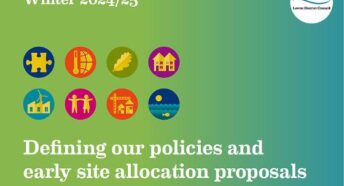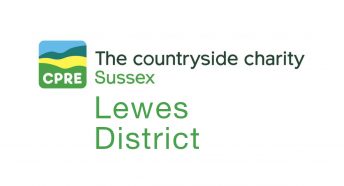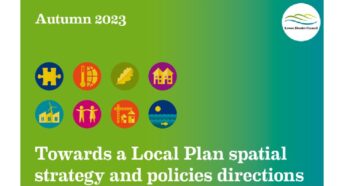Lewes District Update November 2020
CPRE Sussex activity in Lewes District up to 30 November 2020.
Despite the restrictions on normal life induced by the Covid-19 pandemic, developments in the planning world have been continuing at a fast and furious pace, thanks to Boris’s “Build, Build, Build !” agenda.
Current housebuilding in Lewes District is proceeding at a rate that is faster than for many years, and very close to the Local Plan target of 345 new homes per year. The new development is almost all on sites allocated in the Local Plan and in the Neighbourhood Plans that now cover most of our District’s towns and villages. However, directly contrary to proclaimed national policy, a very high proportion of the new building is on greenfield sites in the Low Weald countryside. There are plenty of sustainable urban brownfield sites in our Local Plan, like Lewes North Street and a range of Newhaven sites, and most of them now have full planning permission. Actual development, however, remains stalled.
Recent experience in Lewes District has been comparatively benign. First in Mid-Sussex to our west, and now in Wealden to our east, we have seen developer feeding-frenzies, with planning permissions for large commuter developments being granted for one piece of Low Weald countryside after another. As just one of many examples, this year permission was granted for a monolithic new development in East Hoathly that will dwarf the existing village. Even the High Weald AONB, supposedly with the same level of protection as a National Park, has been affected. As this new Sussex housing is not accompanied by new Sussex jobs, the natural consequence is more and more long-distance commuting.
Housing development in Lewes District in 2021: Unless the government changes its current mind the Lewes District housing target will shoot up from 345 per year to about 800 per year – more than double. The developer-sharks are already circling.
The second main arm of the threat to our countryside is the Planning White Paper, whose consultation has recently closed. That document was created by a specially selected group of developers and their acolytes, with all countryside protectors carefully excluded. Astonishingly the White Paper proposes a set of major changes to the “obstructive” planning system. The changes all aim to make development much easier and more profitable. They achieve this at the expense of proper site assessment and the interests of local communities.
CPRE Sussex have spent much of the late summer and early autumn constructing careful, evidenced rebuttals of these proposals, now submitted as formal comments. We have worked with wildlife and other countryside protection groups, and canvassed our local councils and our MPs. Both Lewes District Council and our Lewes MP have indicated their support, and made their own comments. We shall see.
The most important way the planning system can help reduce climate change is to ensure that the new homes needed are built close to people’s work and the other services they need. Continuing to focus new building at highly car-dependent countryside locations is exactly the wrong thing to do. Unfortunately, while the government is making all the right noises about the general principles, almost every one of its White Paper proposals will achieve the exact opposite. Lewes will need an active and effective CPRE.
John Kay
Lewes District




